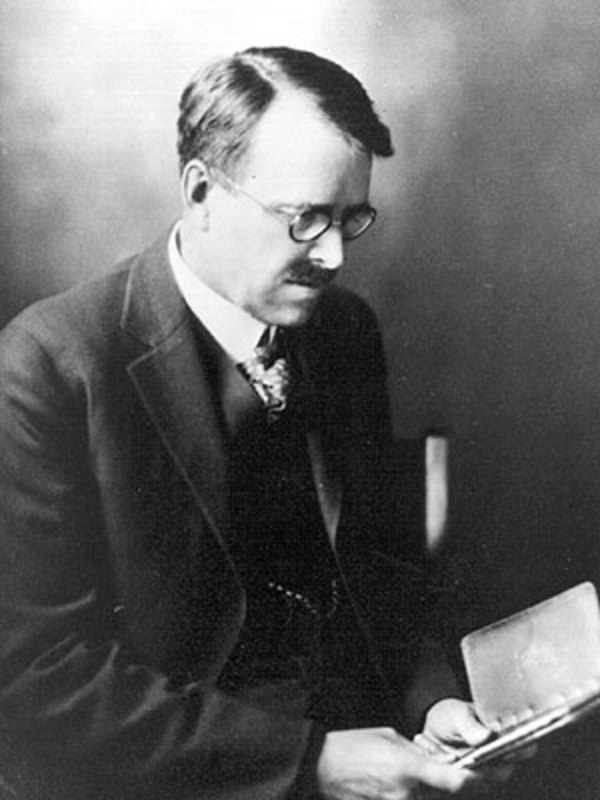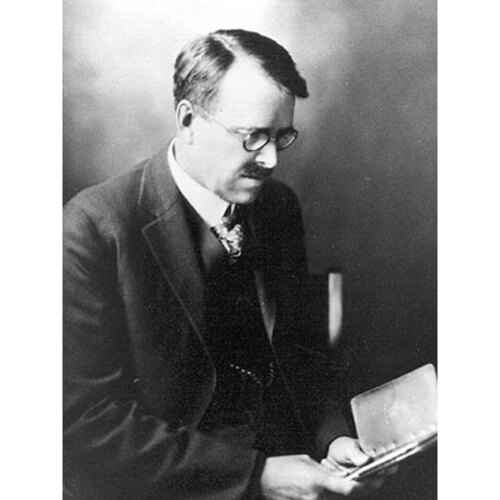
Source: Link
STEWART, David Alexander, missionary, journalist, physician, sanitarium director, university professor, lecturer, author, and historian; b. 15 Feb. 1874 in Fletcher, Ont., son of Francis Beattie Stewart and Elizabeth Farquharson; m. 2 June 1915 Ida Kate Bradshaw (d. 1936) in Winnipeg, and they had a son; d. there 16 Feb. 1937.
In 1891 David Alexander Stewart moved with his parents to Manitoba, where they served as Presbyterian lay missionaries. He graduated from normal school in Winnipeg in 1892, and subsequently taught school for two years in Morden before enrolling in Manitoba College. After completing a ba (1899) he entered theology. In 1902, perhaps drawn to the idea of becoming a medical missionary, he abandoned theology for medicine at the Manitoba Medical College. His younger sister, Isabel Maitland Stewart, would become one of North America’s pre-eminent nursing educators.
His family was unable to finance his studies, so Stewart had to pay his own way. Initially, he derived his income chiefly from mission work, but between 1903 and 1906 he was a reporter for the Manitoba Free Press, where he became a protégé and lifelong friend of editor John Wesley Dafoe*. He would continue until his death to be a regular contributor to the paper.
After graduating in 1906 Stewart served as the first senior intern in medicine at the Winnipeg General Hospital, where he specialized in communicable diseases. In 1908 he was appointed executive director of the Manitoba Tuberculosis Society, created to campaign for a provincial sanitarium. He remained in this capacity for two years, travelling extensively and writing prolifically. In 1909 he contracted tuberculosis, and sought care at the Adirondack Cottage Sanitarium at Saranac Lake, N.Y., founded by American physician Edward Livingston Trudeau. There, he gained personal experience of the rest cure, the regimen of wholesome food, fresh air, sunlight, and leisure that would prevail at the sanitarium soon to be established in Manitoba.
In 1910 the goal of a sanitarium for the province was realized with the opening on 24 May of a 65-bed facility near Ninette in southwestern Manitoba. Stewart, still convalescing in New York, was named medical superintendent, an office he would hold until his death. Under his direction the Manitoba Sanatorium became a renowned centre for tuberculosis care and research. He is credited with developing an advanced thoracic surgery program; with convincing officials at the medical school at the University of Manitoba to make it, in 1914, the first in Canada to require its students to take rotations in the treatment of tubercular patients; and with setting up, after 1926, mobile diagnostic clinics that visited remote communities. A passionate advocate of sanitarium care, he persuaded the provincial government to assume the costs for indigent patients. This measure allowed more invalids to remain at the facility until they had recovered and were no longer contagious, thereby slowing the spread of the disease. In addition, he passed on his knowledge to another generation of physicians; the University of Manitoba appointed him lecturer in medicine in 1918, assistant professor in 1920, and associate professor in 1921.
Stewart emphasized both treatment and prevention through education. The author of a prodigious number of academic articles, he popularized his work in newspapers, magazines, and pamphlets and through presentations and radio addresses. He saw education as vital not only to the elimination of tuberculosis, but also to a broader project of social uplift. From its earliest days, patients at the Ninette sanitarium were required to take courses in nutrition and disease prevention. Moreover, he developed programs that enabled adult patients to study high-school subjects and to acquire vocational skills while they were convalescing. In later years he became a prominent supporter of the adult-education movement [see Alfred Fitzpatrick], helping in 1931 to found the Manitoba Association for Adult Education.
In 1916 Stewart and his wife, Ida, moved to Ninette, where their son was born. Two years later Ida contracted a severe tubercular infection. After all other options had been exhausted, she underwent thoracoplasty, a radical operation involving the removal of ribs. It was successful, and the experience reinforced Stewart’s commitment to aggressive treatment. However, the surgery also left Ida an invalid, often confined to house and bed. This result inspired Stewart to contemplate the meanings of ill health and disability, and he would later write extensively on what he called “the philosophy of the sick man.” He was similarly reflective about the obligations of the physician, and one of his final projects was to revise the code of ethics for the Canadian Medical Association.
Stewart was a moral philosopher; in a 1926 address to nurses he encapsulated his approach to life in “four master words”: knowledge, work, conscience, and charity. He ardently promoted the acquisition of knowledge for its own sake, and considered rational recreation and the pursuit of hobbies to be imperative to personal development. A keen amateur historian with a special interest in the western fur trade, he played a pivotal role in the reconstitution in 1926 of the Historical and Scientific Society of Manitoba, dormant since 1910, and he served as its president from 1929 to 1934. He viewed the organization as a means of diffusing popular knowledge about local history and was especially active in the designation of historic sites and the placement of commemorative plaques. From the early 1930s he was also an internationalist and a pacifist whose Remembrance Day addresses at the sanitarium were widely reprinted, although Ida, who wrote prolifically about peace and disarmament, was the better-known activist.
David Alexander Stewart received many distinctions during his lifetime. He served as president of the Manitoba Medical Association in 1926 and as vice-president of the American National Tuberculosis Association that same year. In 1927 he was awarded an honorary lld by the University of Manitoba. In his introduction of Stewart for the presentation, former Manitoba College professor Frederick W. Clark noted that the sanitarium was “Stewart’s monument.” By the time of his death, the result of a post-operative infection, the institution had grown from 65 beds to 300, and the mortality rate from tuberculosis in the province had dropped by four-fifths. The province was at the forefront of the treatment of tuberculosis in Canada, and “Stewart of Manitoba” was recognized worldwide for his contributions to professional education, preventive medicine, and the international campaign against tuberculosis.
The DCB has a list of more than 130 articles, speeches, brochures, and reports that David Alexander Stewart wrote on medical subjects, particularly tuberculosis and public health, as well as on the history of the Canadian west, philosophy, and natural history.
AM, MG9, A54 (David Alexander Stewart fonds). Eva Calverley, And so … Ninette, 1879–1919 ([Brandon, Man.], n.d.). F. W. Clark, “Doctor David A. Stewart,” Univ. of Manitoba Quarterly (Winnipeg), 2 (1927–28): 43–44. Dedication and unveiling of Dr. David A. Stewart memorial, Manitoba Sanatorium, Ninette, Canada, July 24, 1940 (n.p., [1940?]). R. G. Ferguson, “David A. Stewart Memorial Lecture: changes in the epidemiological conception of tuberculosis,” Univ. of Manitoba Medical Journal (Winnipeg), 13 (1941–42): 62–68. C. S. Houston, “D. A. Stewart, 1874–1937: western tuberculosis pioneer,” Royal College of Physicians and Surgeons of Can., Annals (Ottawa), 25 (1992): 36–38; “R. G. Ferguson and D. A. Stewart: leaders in the crusade against tuberculosis: fifth DAS Lecture, 13 November 1989” (unpublished paper, 1989; copy in author’s possession). Man., Dept. of Cultural Affairs and Hist. Resources, Hist. resources branch, Dr. David Alexander Stewart, m.d. ([Winnipeg?], 1982). R. B. Mitchell, “Life piled on life: the second annual Doctor David A. Stewart Memorial Lecture, February 12, 1941,” Manitoba Medical Rev. (Winnipeg), 21 (May 1941): 85–89. E. W. Montgomery, “The Dr. David A. Stewart Memorial Lecture,” Manitoba Medical Rev., 20 (April 1940): 73–79. D. B. Stewart, Holy ground: the story of the Manitoba Sanatorium at Ninette (Killarney, Man., 1999).
Cite This Article
Chris Dooley, “STEWART, DAVID ALEXANDER,” in Dictionary of Canadian Biography, vol. 16, University of Toronto/Université Laval, 2003–, accessed January 22, 2025, https://www.biographi.ca/en/bio/stewart_david_alexander_16E.html.
The citation above shows the format for footnotes and endnotes according to the Chicago manual of style (16th edition). Information to be used in other citation formats:
| Permalink: | https://www.biographi.ca/en/bio/stewart_david_alexander_16E.html |
| Author of Article: | Chris Dooley |
| Title of Article: | STEWART, DAVID ALEXANDER |
| Publication Name: | Dictionary of Canadian Biography, vol. 16 |
| Publisher: | University of Toronto/Université Laval |
| Year of revision: | 2017 |
| Access Date: | January 22, 2025 |



